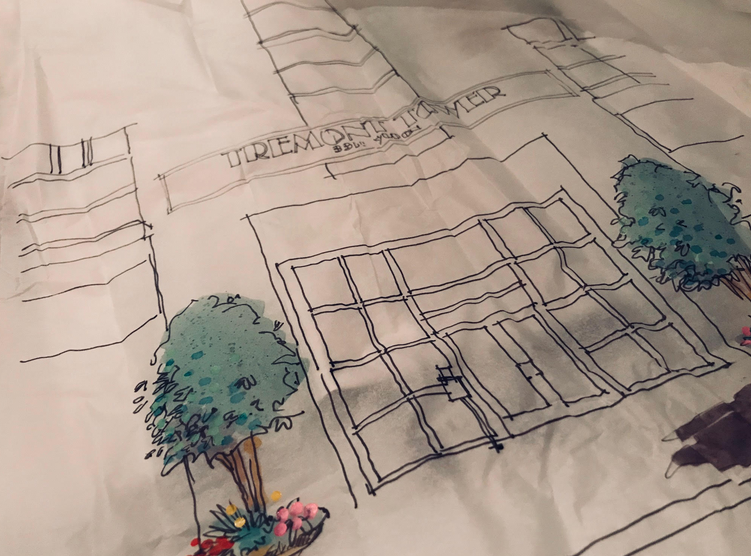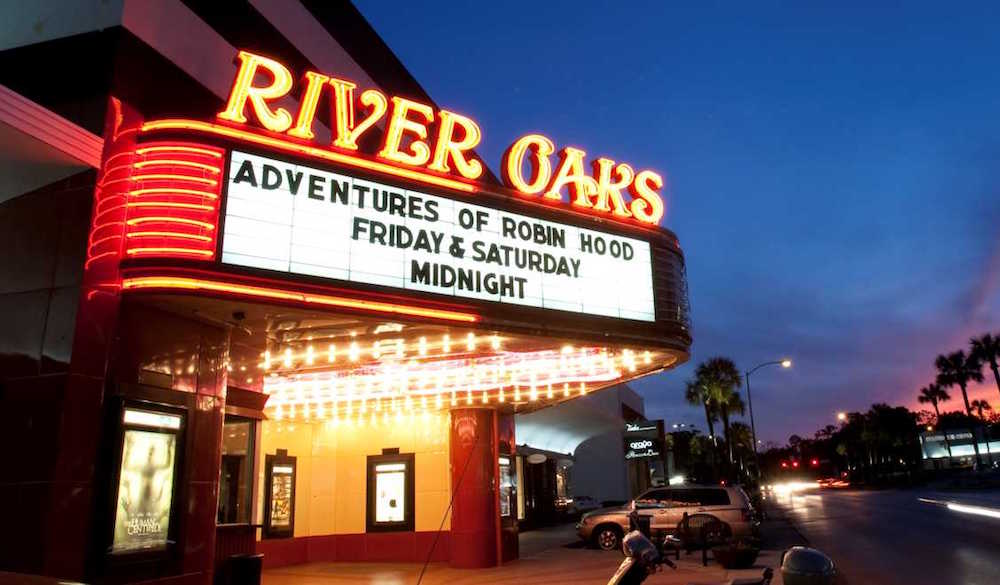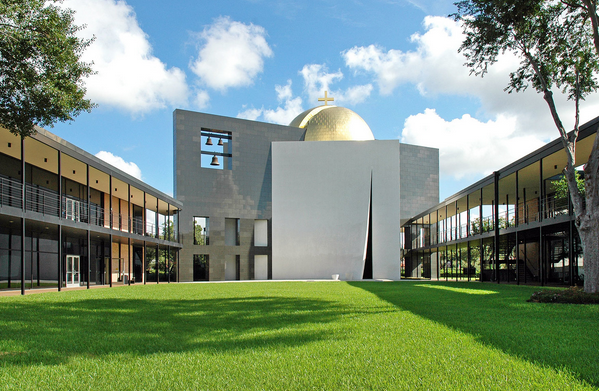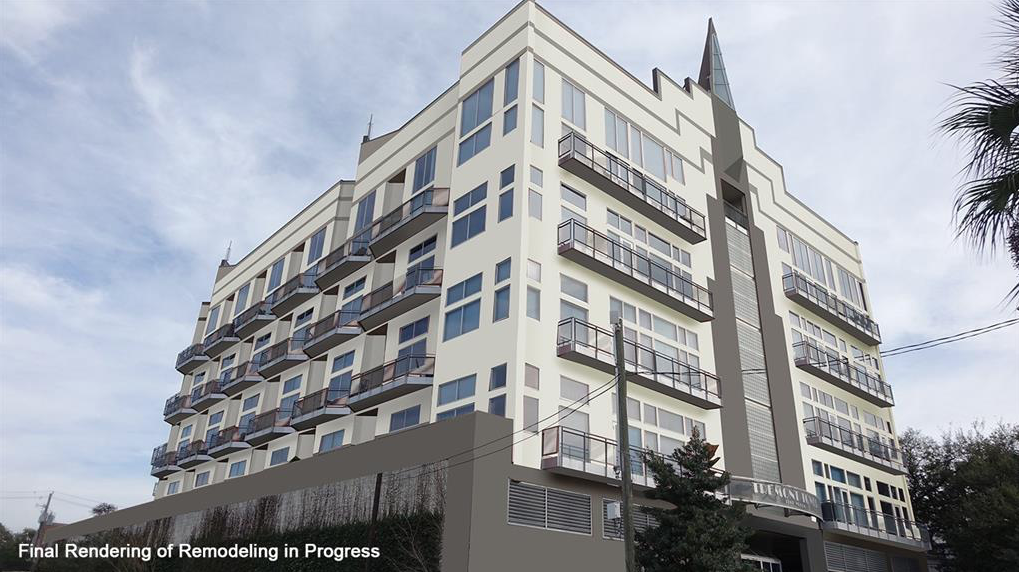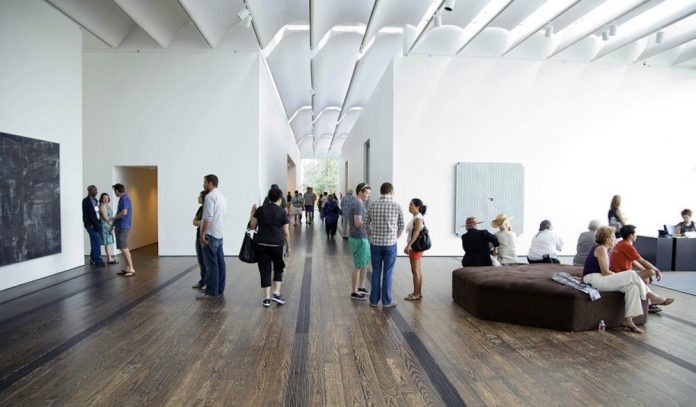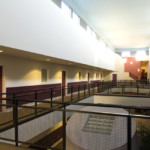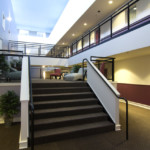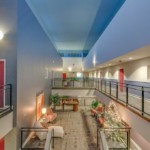As a resident or visitor to the Tremont Tower, it doesn't take long for you to ask yourself, who is the architect responsible for such a unique building? Then you walk around Montrose, and you start noticing several other buildings and monuments that take similar architectural lines: Montrose Townhouse Lofts and Tower Lofts. It wasn't difficult to find that the architect was the same - Mr. Irving Phillips. While pondering one day I decided to do a little more research and found a great article on him and his work originally published in 2006 by the Houston Chronicle that can be seen here. For your convenience I copied the full article below:
A comment that might one day be overheard repeatedly on a walk or drive along Montrose Boulevard is, Look, it's an Irving Phillips!
Houston architect W. Irving Phillips Jr., 69, has designed two buildings on Montrose that are beginning to pierce the neighborhood's airspace.
They are the Art League Houston's origami-inspired building at 1953 Montrose, and The Riparian, a 14-story luxury condominium on the site of the former River Café at 3615 Montrose.
Kitty-corner from the Art League building is Phillip's The Renaissance on Montrose at 1700 Montrose, which boasts a copper clad dome/dome tower that rises 60 feet.
He's also designed the gateway monuments at Montrose Boulevard at Westheimer, and at Bagby at Westheimer.
"This is my neighborhood," said Phillips, who resides with his wife and partner, interior designer Kathleen Wild, in a residence/studio on Mt. Vernon.
Phillips' other current projects include The Bayou on the Bend, an eight-story, 242-unit residential development along Buffalo Bayou between Memorial Drive and River Oaks, and The Point, a 21-unit mid-rise roughly 1 mile north of downtown on a hilltop overlooking White Oak Bayou.
It is a joint venture with Delphi West Developer, co-developer of The Riparian.
Phillips admits he's busy, working roughly 60 hours a week, adding, "I wish I could work more."
To tell the story of Phillips is to take a look at his designs.
In his biography, he writes, "My approach to design is much the same as a playwright writing a play. It's an approach to planning architecture that creates a meaningful story about the lives of those it will house, incorporating the heritage, the legends, and the personalities of people for which the plans are made."
"I see buildings as a work of art, not just a building," Phillips said.
And the manifestation of that approach is what Houstonians are experiencing with Phillips' designs.
He is affecting the city's residents where they live, wait for public transportation, train and anticipate fighting fires, attend classes, read books, experience nature, buy goods and entertain themselves.
His works in Houston include:
•Tremont Tower, a 76-unit mid-rise condominium at 3311 Yupon at Westheimer;
•Metropolitan Transit Authority's Hillcroft Transit Center;
•Houston Public Library's Vinson branch, 31001 Fuqua, and Jungman branch, 5830 Westheimer;
•Houston Fire Department stations No. 9, 702 Hogan at Freeman; No. 5, 2020 Hollister at Hemmerly: and No. 20, 6902 Navigation at Macario Garcia;
•Friendswood Development Co.'s Kings Crossing Town Center;
•Additions to and renovations of The Kirby, a 12-story retail and 65-unit residential condominium at 917 Main in downtown Houston;
•Common buildings and landscape architecture for Canyon Gate Ranch at Cinco Ranch;
•A $3 million renovation of Garden Villas Elementary, a Houston ISD music magnet school at 7185 Santa Fe ; and
•Landscape design and bridge restoration in Buffalo Bayou Park.
Other projects
Outside the city, his projects have included the Southwest Cancer Center and a medical office building in Lubbock; condominiums in Galveston and a condominium and marina in Port Isabel; condominiums and a 35-story tower/hotel in Doha, Qatar; mixed-used (retail and housing) structures in Wenzhou and Hangzhou, China; and worker housing units near Mexico City.
It all started for Phillips at age 5 years old, when he began making spaces with dominoes.
"Then I realized I didn't need dominoes, I could draw," he said.
He attended Pershing Middle and Lamar High schools and was active in sports — "Even though I'm short," he said.
Phillips admits he didn't really know what architecture was until he arrived at the University of Texas at Austin in 1954, where he studied with the "greatest educators of the century" — British architect, author and architectural historian Colin Rowe, Werner Seligman, Bernard Hoesli, John Hejduk, Robert Slutzki, John Shaw and Lee Hodgden — considered the intellectual giants of architecture at the time.
Humble beginnings
"We (architecture students) were a bunch of hicks and it was serendipity. They — the 12 deans — had incredible influence," said Phillips, who graduated UT with a bachelor's degree in architecture in 1959.
It didn't last long, Phillips said, as they all were fired and scattered to different places.
But the core reassembled with Rowe at Cornell University in Ithaca, N.Y., where they were known as "The Texas Rangers."
After two years of work and study in Europe, Phillips followed them to Cornell, where he said he "almost had Colin all to myself." He received his master's degree in architecture in 1964. (He named the first of his three sons after Rowe.)
Phillips married in New York City and returned to Texas in 1963. His career began with the design of a Galveston residence for Louis Pauls, a former Galveston city councilman, in 1959.
Phillips opened his own firm in 1968, and his practice grew normally, he said. At one point, he had a staff of 40 employees.
He said goodbye to the headaches of running a large business and dealing with management issues when he sold his firm in 1992 and began working on his own as a design architect.
'Lone Ranger'
Jokingly referring to his pedagogues at Cornell, Phillips calls himself "The Lone Ranger."
"I'm it," Phillips said, meaning he works one-on-one with his clients and not through employees. "There's no management, and it's strictly hands-on-detail. Now, it's really fun."
Phillips has seen continuous construction since that decision in 1992, and he's not about to think about retirement.
"I'm just getting started," he said, adding that he'd like to design a church and an opera house.
In addition to his design work, Phillips has taught courses at the University of Houston and the University of Texas.
He and Wild attend art openings and concerts in their free time.
"We love the same things," he said.
For the Texas and Houston Sesquicentennials in 1986, Phillips commissioned Paul English to compose Neotexanaissance, a concerto for chamber orchestra, improvising quartet with solo fiddle, and computer-controlled synthesizers.
Phillips plans to remain in Houston for the creative opportunities it offers him.

